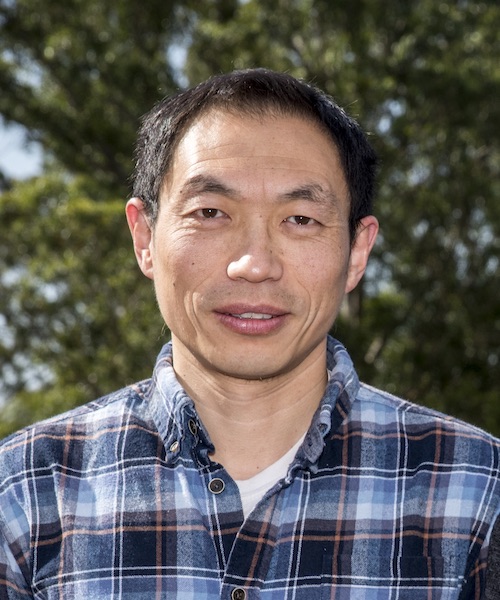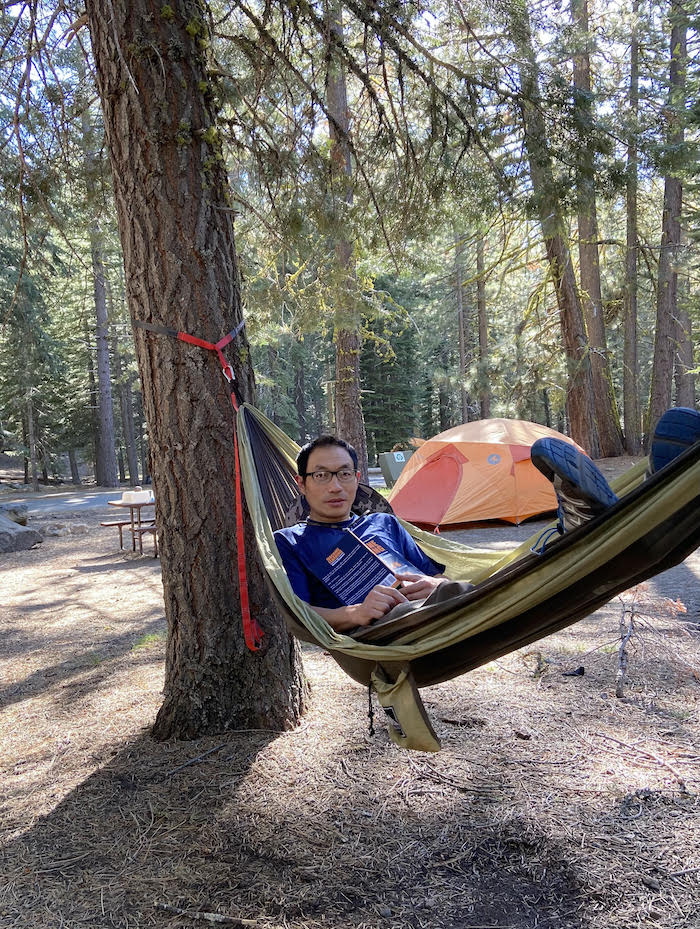
Wanli Yang was recently honored as an American Physical Society fellow and is a member of an R&D 100 award-winning team for the second time. He credits his love of physics with a total accident—reading a book he borrowed from a classmate in high school!
What does your work at the ALS involve?
For scientists at the ALS, we all have two kinds of roles. One is to develop the instrumentation to advance user science, and two is to run our own scientific research. We have been improving resonant inelastic x-ray scattering (RIXS) capabilities to support users with various science needs. For our own research, one of the benefits of staying in a facility like the ALS is that I’m essentially free to choose scientific topics to pursue. I have been focusing on energy storage materials research for about a decade. The spectroscopy we run at the ALS always falls into the fundamental physics domain, but we try to link the fundamental information to the practical aspects of materials used in energy storage devices.
How did you become interested in this field?
Thinking back, there are several turning points in my life. In high school, I read One, Two, Three…Infinity by George Gamow. I was dragged immediately into the physics part of the book. I loved it so much that, without a copy machine—it was China in the 1980s—I copied that whole part of the book by hand. Actually, one of my classmates got the book from the library but just left it there for a while, and I accidentally saw it. My love for physics began from that point.
When I was a student at the Institute of Physics in Beijing, our group collaborated with Prof. Z.-X. Shen’s group at Stanford. After my PhD studies, I went to Stanford as a postdoc and came to the ALS for angle-resolved photoemission spectroscopy (ARPES) experiments to study superconductivity in 2000. However, when I joined the group, some side projects on nanomaterials just happened to open up, and that was another turning point—I was dragged from highly correlated physics into functional material studies. Soon I realized that, although a lot of soft x-ray techniques were developed for fundamental physics studies, they’re very powerful for practical materials research.
The shift in research interests guided me to switch from ARPES to soft x-ray absorption and RIXS after my postdoc training, but the study of battery materials emerged as another total accident: I was actively involved in the Berkeley Lab Asian Association (BLAA), and at one of the casual lunches with BLAA committee members, a battery scientist, Dr. Gao Liu, told me that he’d been working on a battery material and looking for the location of Fermi level in his materials. I said, “Hold on! That’s a physics concept!” After some quick discussions, I realized we could use soft x-ray spectroscopy at the ALS to get very useful information on battery materials. That was our first collaboration on battery studies, and also the first time I started to see infinite opportunities for contributing to energy storage materials through soft x-ray spectroscopy.
Congratulations on being elected an American Physical Society fellow! What does this mean to you?
I am deeply honored. I was trained in the physics field but have switched research topics towards materials science and chemistry. Even though we work on applied materials, our work remains connected to fundamental physics research because spectroscopy, relying on photons interacting with electrons, is essentially a physics concept. One of the most important contributions we made is coupling fundamental physics deeply with applied materials’ performance. I think this really meets our societal needs at the moment, and it’s important to educate more people in various functional material fields, to let them know that we have powerful soft x-ray techniques at the ALS that they can use in many different frontier topics.
How are you involved in inclusion, diversity, equity, and accountability (IDEA) at the Lab?
Other than being involved in some of the IDEA task forces, I believe we could all contribute to IDEA through our regular daily work. For example, I serve as a peer review committee member for the Canadian Light Source, and review lots of papers and other proposals. For authors from minority communities, I try to provide fair judgements but also with consideration of their pressures and environments. I always feel that if we pay a bit more attention in our daily work, we can all make some real improvements to our community.
What do you like to do in your free time?
I like biking—biking to work or in the mountains. I also like hiking and camping, on my own, with my dog, or with my family. Going into the wilderness always makes me feel humble—whatever we can achieve, compared with Mother Nature, is nothing! I’m the outing chair for our local scout troop, and it’s always interesting to interact with the other parents in the scouting community with very different family backgrounds. I’m happy to be able to contribute to the kids and to the community, while having fun myself.
